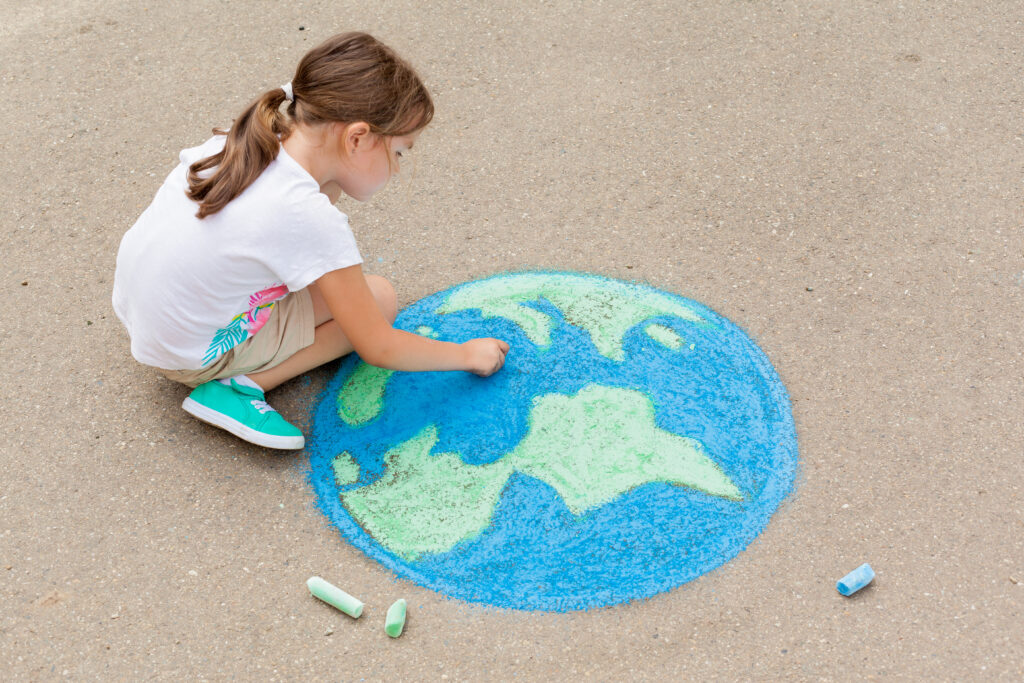 I follow several social media accounts that post funny, thought-provoking, or inspiring posts for those who serve as educators. I recently saw a post that said:
I follow several social media accounts that post funny, thought-provoking, or inspiring posts for those who serve as educators. I recently saw a post that said:
A messy classroom means students are engaged!
GO FOR CHAOS!!
I confess, my immediate reaction was, “YES! We want engaged students! And learning is messy, so let’s embrace the ‘messy!’”
After a minute’s reflection, however, I’m not so sure that my gut reaction was the right response.
True confessions: when I was a middle school teacher, I had a reputation for having a “messy” room. I’m just owning it; the way I taught science and Bible classes, we almost always had some sort of project, some kind of contraption-building, some ongoing investigation that just made the classroom messy. I’d like to think that this messiness was indicative of engagement on the part of my students—and indicative that they were active participants in their own learning.
I’m naming this because I want to be clear that I’m not pushing back on the idea of messiness, per se. I’m also not pushing back on the idea of engagement—I want students to be engaged in learning! Active learning is often messy, after all.
Let me give a specific example to illustrate what I mean.
One of my favorite active learning opportunities for my middle school science students was messy in both the physical and intellectual sense of the word. I brought in five rolls of paper towels—five different brands—and set them before my 7th grade class. I then asked a magic question: “Which brand is best?” Almost immediately, the students began sharing their ideas—probably based mostly on their family grocery-buyers’ preferences.
I then gave them the challenge: “Get together with your lab group and investigate which brand is best.” Students enthusiastically headed into our science lab, where I already had materials set out for them: beakers, graduated cylinders, droppers, rulers, balances, and more. And pretty much anything else they thought of was fair game as well: “Can we go get a bucket of pea gravel from the playground?” “Can we see if the cooks have any syrup we can use to scrub off the tables?” My response was always, “Yes, you absolutely can!”
Soon, I had groups of students doing all kinds of things—making a mess!—in the science lab. One group was carefully measuring out water in a graduated cylinder before spilling it all over the floor, and then counting how many paper towels it took to mop up. Another group had soaked paper towels and was pouring in gravel until the towel ripped through, and then would weigh how much gravel it held. Another group was dripping water into a dry paper towel and painstakingly counting each drop until the water started dripping through onto the table. They soon started to realize that there were about a dozen different things happening in the room … and they began questioning each other about just what they were doing.
The questions, however, were not mean-spirited; they were honest wondering. When one group is pouring syrup on the tables, another is weighing a bucket of gravel, and another is rubbing paper towels on their faces, maybe it’s no surprise that they began asking, “What are you guys doing?”
I paused their work and asked what the problem was. They quickly pointed out that they were doing wildly diverse things, and one thoughtful student pointed out, “If we’re all doing different things, how can we really know which brand is best?”
Aha! Now we were getting somewhere. This gave me the perfect opportunity to explain a bit about scientific enterprise, including aspects such as the importance of operational definitions, being clear in our procedures, and collecting evidence that will help us answer our questions. I pointed out that the term “best” is pretty subjective, so they would have to be clear about how they defined “best” and then deliberate collecting the evidence they would need to support their claims about the best brand.
“But what if we come to different answers?” Oh, that’s a great question! My answer: we should come to different answers if we have different starting points, different methods, and different priorities in the way we are trying to answer the question. They seemed a little skeptical, but they were willing to travel down this weird path with me.
After another whole class meeting for data collection, I had each group give a short, informal presentation to the rest of the class to explain their investigations, including their definition, their claim for which brand was the best, their data collection procedures, and the evidence they accumulated to back up their claim. It was a fascinating, high-engagement activity, and the kids came away with a much deeper understanding and appreciation for how science works, because they had experienced this messy learning process firsthand.
Reflecting on that social media post I shared at the beginning of this piece, I think what is bothering me most is the idea that messiness is what we’re striving for. In particular, the statement, “GO FOR CHAOS!” seems to be missing the mark. When we were doing the paper towel investigation, my classroom did feel a little chaotic. But I wouldn’t say that I was striving for chaos. Even when things were getting a little wild, it was a productive, dynamic, creative commotion, rather than a disorganized, haphazard, out-of-control jumble. Students in this scenario had a lot of freedom, but it wasn’t chaos. Rather, the goal is to prompt intellectual messiness for our students, whether the classroom is getting physically messy or not.
Perhaps the key takeaway is that we should consider education as something done with and for students, rather than something done to students.
What do you think? Should we be aiming for “messy” learning?
 About the Author
About the Author
Dr. Dave Mulder is a Professor of Education at Dordt University. He teaches courses in educational foundations, STEM education, and educational technology, and chairs the Education department. He co-hosts the Hallways Conversations podcast and provides professional development experiences for educators in schools across North America. He is a speaker at ACSI’s Flourishing Schools Institute.

